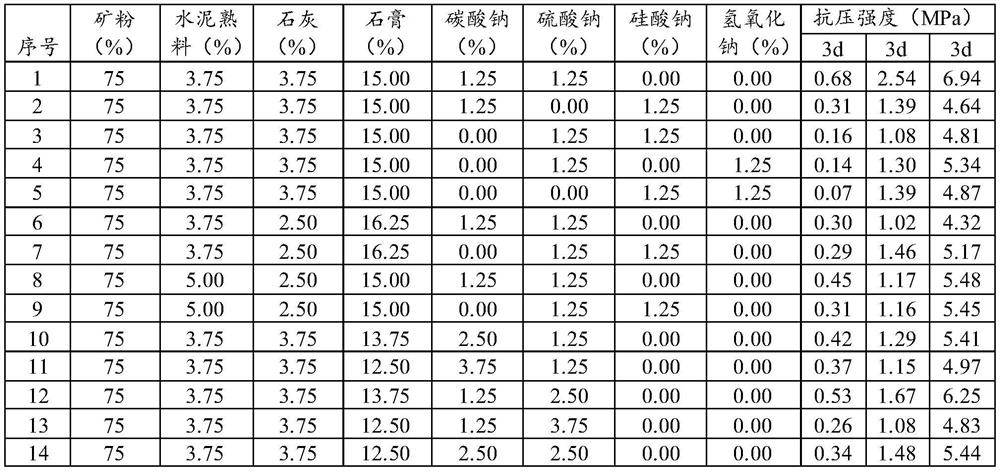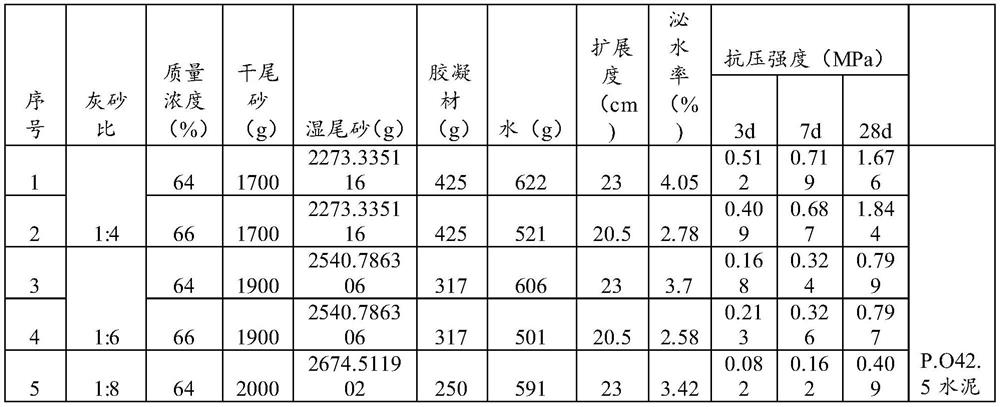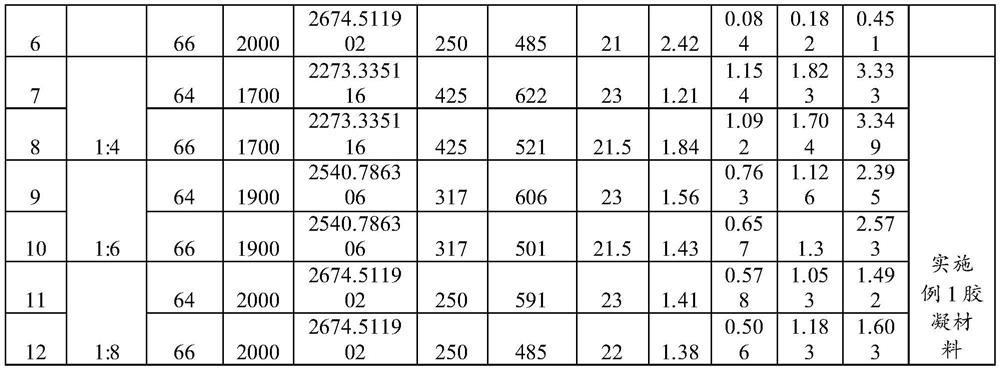Metal mine underground filling cementing material as well as preparation method and application thereof
A technology for cementitious materials and mines, which is applied in the fields of backfill, mining equipment, earthwork drilling, etc. It can solve the problems of easy water accumulation in the goaf, high strength requirements of the backfill body, and small particle size of tailings, so as to achieve the convenience of use. , the effect of strong ability to adapt to local conditions
- Summary
- Abstract
- Description
- Claims
- Application Information
AI Technical Summary
Problems solved by technology
Method used
Image
Examples
preparation example Construction
[0054] The present invention also provides a method for preparing the cementitious material filled underground in metal mines, comprising the following steps:
[0055] Grinding granulated blast furnace slag to a specific surface area ≥ 420m 2 / Kg, to obtain granulated blast furnace slag powder, grind cement clinker, quicklime and desulfurized gypsum to a specific surface area ≥ 360m 2 / Kg, and then mix granulated blast furnace slag powder, cement clinker, quicklime, desulfurized gypsum, sodium carbonate and sodium sulfate to obtain the cementitious material for underground filling of metal mines.
[0056] In the present invention, the sources and amounts of the granulated blast furnace slag fine powder, cement clinker, quicklime, desulfurized gypsum, sodium carbonate and sodium sulfate are the same as those of the above-mentioned granulated blast furnace slag fine powder, cement clinker, quick lime, desulfurization The source and consumption of gypsum, sodium carbonate and so...
Embodiment 1
[0063] Weigh 75 parts of granulated blast furnace slag powder, 3.75 parts of cement clinker powder, 3.75 parts of quicklime powder, 15 parts of desulfurized gypsum powder, 1.25 parts of sodium carbonate, and 1.25 parts of sodium sulfate.
[0064] The granulated blast furnace slag is ground by ball mill or vertical mill until the specific surface area is ≥420m 2 / Kg, grind desulfurized gypsum, quicklime, and cement clinker through a ball mill or a vertical mill until the specific surface area is ≥360m 2 / Kg, sodium carbonate and sodium sulfate do not need to be treated; then add the above materials to the dry powder material mixer in turn and stir evenly.
Embodiment 2
[0066] According to the preparation method in Example 1, the difference is that the raw material ratio in Table 1 was used to prepare the gelled material.
[0067] Then, the cementitious material obtained by serial numbers 1 to 14 is mixed with water in a proportion of 1:6 with a lime-sand ratio (mass ratio of cementitious material to tailings) to form a filling material with a mass concentration of 72%, and a humidity ≥ 50%. The filling experiment was carried out at a temperature of 20±2°C, and the results are shown in Table 1.
[0068] Table 1 raw material ratio
[0069]
[0070] According to Table 1, the optimal formula is mineral powder 75% + cement clinker 3.75% + lime 3.75% + gypsum 15% + sodium carbonate 1.25% + sodium sulfate 1.25%.
PUM
| Property | Measurement | Unit |
|---|---|---|
| specific surface area | aaaaa | aaaaa |
| specific surface area | aaaaa | aaaaa |
Abstract
Description
Claims
Application Information
 Login to View More
Login to View More - R&D
- Intellectual Property
- Life Sciences
- Materials
- Tech Scout
- Unparalleled Data Quality
- Higher Quality Content
- 60% Fewer Hallucinations
Browse by: Latest US Patents, China's latest patents, Technical Efficacy Thesaurus, Application Domain, Technology Topic, Popular Technical Reports.
© 2025 PatSnap. All rights reserved.Legal|Privacy policy|Modern Slavery Act Transparency Statement|Sitemap|About US| Contact US: help@patsnap.com



